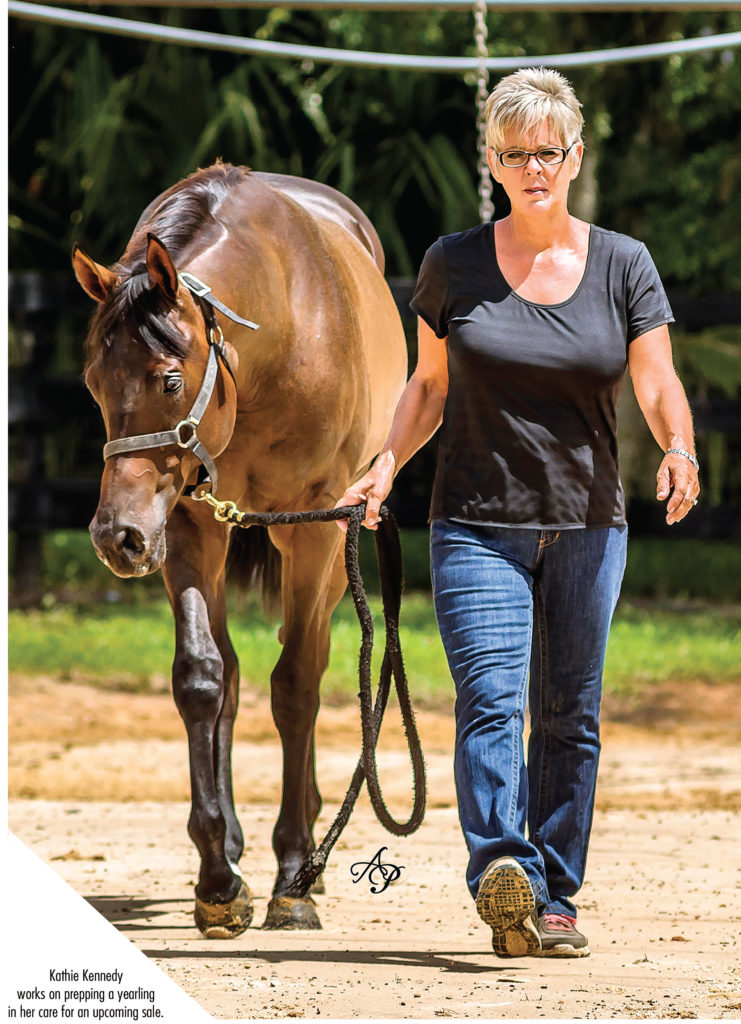 Although selling a horse in the current economic climate may not be as easy as it once was, breeders of show horses do have more methods open to them than ever before. Social media has made it easy to connect with potential buyers from across the globe.
Although selling a horse in the current economic climate may not be as easy as it once was, breeders of show horses do have more methods open to them than ever before. Social media has made it easy to connect with potential buyers from across the globe.
But the one method that has withstood the test of time is the live auction, due in part to the instant results it provides when the gavel goes down.
Several sale organizers have discovered that holding a prospect sale at a major event, like the Quarter Horse Congress, Tom Powers Futurity or National Snaffle Bit Association’s World Show, can be beneficial because of the captive audience they attract. When consigning a show prospect makes the individual eligible for a future event, like a sale stakes class or futurity, the appeal only grows.
Over the years many breeders have taken advantage of the opportunity to offer foals they have raised at yearling auctions across the U.S.
Mike Jennings of Professional Auction Services, which produced the 2016 Congress Super Sale says that if you want to get a retail price for your product, you have to put it in a retail package. That means investing the time into grooming and fitting the horse so it looks like it has the potential to be a future winner.
We asked several breeders familiar with yearling sales how they prepare their young horses for auction. Each has a slightly different approach, but all agree that investing the time to prepare in advance yields dividends the day of the sale.
Nutrition
A sleek, glistening hair coat is the first thing that will catch a buyer’s eye. Skilled shoppers will be looking for much more than a shiny coat, but it is the first thing they will see. The trick to achieving a dazzling shine begins with a good nutritional program.
“Good nutrition is essential to good coat condition. I feed my yearling horses the same high-quality hay and feed that I feed to the show horses,” said Texas breeder, Dale Livingston, who uses yearling sales as a tool to promote his young stallion.
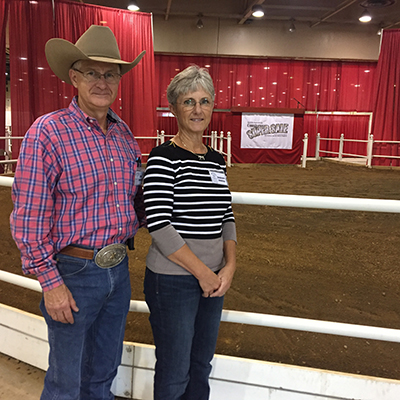
Mike and Stephanie Jennings of Professional Horse Services
In 2016, Livingtson claimed top honors for the highest selling yearling at the Congress sale when Do Ya Dream Of Me, a 2015 gray mare by Im A Platinum Dream and out of One Classy Loper, sold for $43,000.
Young horses may even need increased rations prior to heading to a sale so that they arrive looking full and round.
“The travel, the heat and the stress of the event can make them lose weight and you don’t want them to look underweight at the sale,” said Tim Delf.
He and his wife, Barb, are small breeders from Blue Grass, Iowa.
“I’d rather have a little bit of fat on them heading to a sale so we increase their ration ahead of time,” Tim said.
In 2012, the Delfs sold Lopen Assets, by Lazy Loper and out of Double My Assets, at the Tom Powers Sale. The horse went on to finish as the Tom Power Stakes Reserve Champion 2-year-old the next year and also earned the NSBA Reserve World Champion Non-Pro 2-Year-Old Western Pleasure that same year.

Do Ya Dream Of Me, the high selling yearling in the 2016 Congress Super Sale.
Pre-sale training
Good horsemen and women can pick out a promising prospect regardless of how broke the horse is. Experts can tell by watching a horse jog and lope if they have the potential to make it in the show pen. Even though these professionals have honed their skills to the point of seeing through any level of preparation, it’s in the seller’s best interest to have the horse presented in the best manner possible.
While it’s natural that youngsters may blow off steam on a longe line or in a round pen, Jennings cautions that buyers are looking for attitude as much as they are movement.
“Buyers are looking for one that looks trainable and agreeable and are accepting the atmosphere well. The buyer wants to think this one will excel in the show pen,” he said.
At Shane and Darla Leavell’s farm in Kentucky, prep work starts at the end of a foal’s weanling year or the beginning of their yearling year.
Each morning the babies are brought into the barn for feeding and grooming.
After a thorough grooming, the yearlings are worked for about 15 minutes and returned to the stall for a snack and then turned out in the afternoon.
“We do this six days a week from January until the sale,” Shane said. “This makes them good citizens and gets them used to being handled.”
Amy Gumz, also based in Kentucky, recognizes the importance of spending time training yearlings, but doesn’t train the farm’s young sale horses to behave like seasoned show horses.
“A sale horse should present well on the longe line, but in my opinion, they do not need to be so well trained that they look like they are going out to compete in the next class,” she said. “Buyers are so well educated now that they can see through even if a yearling isn’t perfectly behaved on the longe line or isn’t ready to go compete in the next class.”
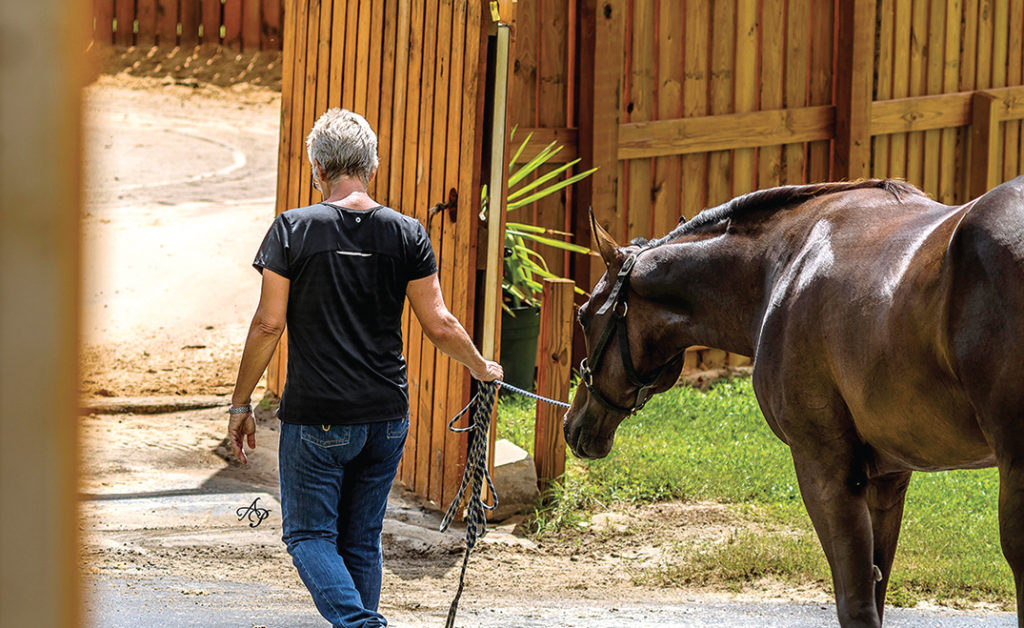
Kathie Kennedy spends a little time on round pen work.
This approach has worked for Gumz, who raised Southern Ventures, sired by Its A Southern Thing and out of Impulsive Venture, the 2016 Top-Selling Filly at the NSBA sale. The filly sold for $50,000 to Seaside Farms, LP and is currently in training with Jay and Kristy Starnes in South Carolina.
“Preparing yearlings for a sale is similar to preparing for a show, just not to the same extent as preparing for a show,” said Florida based trainer, Kathie Kennedy.
Getting ready for an auction sale may also include practice outings in the trailer. Delf typically takes his yearlings to a three or four-day show and lets them settle in.
“We’ll lead them around, work them on the longe line. This way when they arrive at a sale they step right off the trailer ready to go,” he said.
Livingston agrees that horses need experience prior to a sale.
“If the first time they’ve been on a trailer is to go to a sale, the horse can be nervous and lose 75 pounds on the ride because they’re fretting the whole way,” he said.
For others, the ride to the sale is its maiden voyage off the farm.
“Traditionally, the yearlings we sell at auction haven’t left the farm until the sale,” Gumz said.
Leavell uses a similar approach and believes the time invested with a daily grooming and fitting regiment is the best preparation for his yearlings.
“All of ours have loaded right onto the trailer and behaved well at the sale,” he said.
Marketing
In today’s technology driven society, video is a key component in selling a yearling.
“Videos that are prepared for the sale previews are MOST important. These seem to capture the potential purchaser from the comfort of their own home,” Kennedy said.
Gumz can attest to the value of video. In 2016, staffing issues left her shorthanded and she was unable to produce a video of one yearling.
“We ended up no-saleing the horse,” she said.
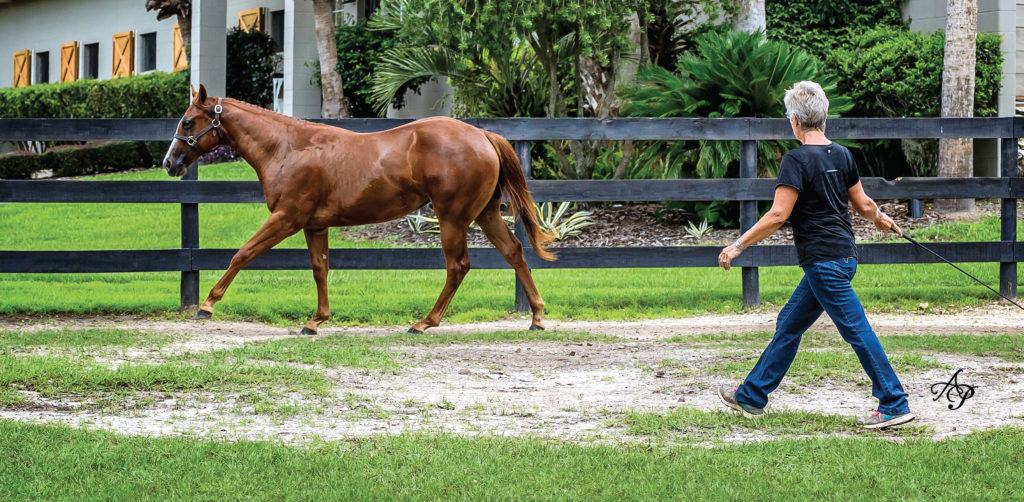
Kathie Kennedy works on a sale video for a yearling in her care
Quality video is more critical than having video for the sake of having it. Take the time to prepare the horse for video as if he was being prepared for the sale. Band the mane, groom the horse and exercise him beforehand to get his energy in check. Then pick a place at home where the horse is comfortable working.
Buyers use the video in advance of a sale to pre-select prospects, but on-site video is as important.
“That way if the weather at the sale or anything else upsets the schedule or if you decide to limit the times the horse is out of the stall, you have something to show customers,” Jennings said.
Leavell travels with a flat screen television for every yearling going to a sale. The screen is hung outside the horse’s stall and the video of that horse plays continuously.
“We have between two and five people around the stalls at all times to talk about the yearlings, show the video and take the horse out if buyers would like to see the horse work,” he said.
Another important piece of onsite marketing is taking a horse out of its stall to work.
“You have to strike a balance between working them enough to be seen and manage energy levels, but you don’t want to work them so much that they are cranky or sore,” Jennings said.
Posting a schedule on the stall and offering group viewings can help manage a horse’s workload while still making it visible to buyers.
To x-ray or not
In the Thoroughbred race industry, no horse is sold without a complete set of x-rays. In the show horse industry, the importance of having these on file for buyers is met with a mixed review.
“Most serious buyers want to do their own x-rays,” Gumz said.
Jennings encourages breeders to invest in x-rays, especially for those horses with higher price tags because the buyer’s decision may hinge on the results.
“For small breeders that is a big expense. That, travel and auction fees add up,” he said. “The breeder has to know that their colt will sell in a price range high enough to recoup those costs.”
For Livingston, x-rays are a part of the package when preparing yearlings for sale. He invests on x-rays because it’s something he would look for when buying a horse. He also believes that the x-rays can encourage a buyer to continue bidding.
“If there is someone who really likes a horse and knows the x-rays are clean, he or she may bid another three or four times, driving the price higher,” he said.
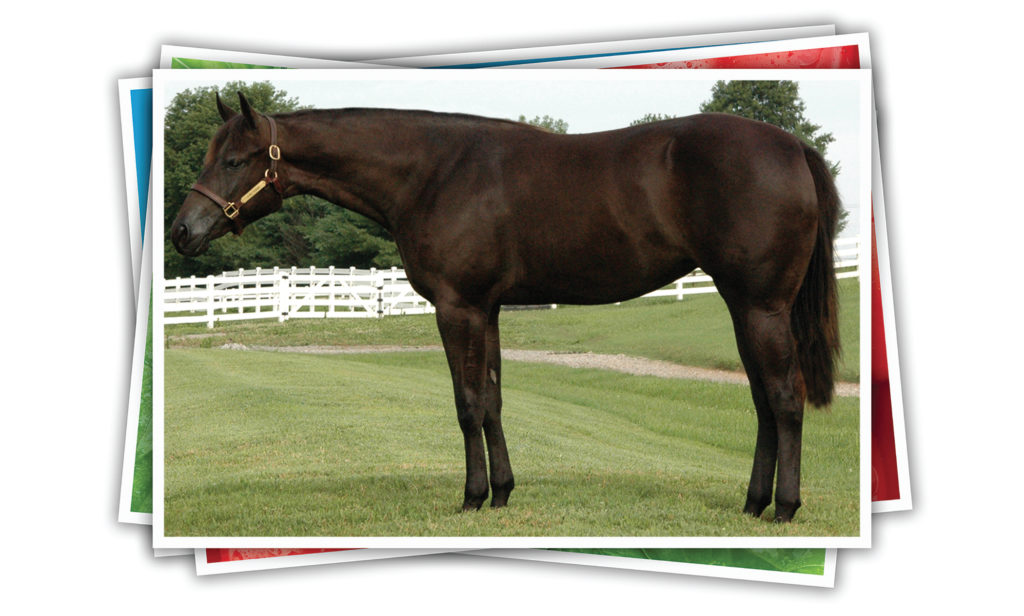
Southern Ventures, the high selling yearling in the 2016 NSBA Sale.
Conclusion
Sales are a culmination of a breeder’s hard work.
“We’ve had people call and tell us they have seen the yearling Kaleena Weekly bought from us,” Leavell said. “They have commented on how nice The Roan Show is breaking out as a 2-year-old and they’ll remember that at next year’s sales.”
Participating in public sales enhances advertising and marketing efforts.
“Because of the internet, you have to take your product and put it under the buyers’ nose,” Jennings said. “The sales help breeders catch the buyers’ attention.”
The best horse may not always sell for the highest price, but Livingston said when you put your best effort into prepping, it will bring what it’s worth.
“When you walk away from the sale you need to know that you’ve done all you can to give the horse the best shot you can,” he said.
At the end of the day, they are horses and young horses at that.
“People have to remember that they are yearlings. Sometimes they are way over done. We should strive for presenting a good product,” Gumz said.
ABOUT THE YEARLING SALES
Tom Powers Yearling Sale
Date: July 1, 2017
Details: The annual sale accepts no more than 100 yearlings each year. Those horse are eligible to be shown in 2018 as maiden 2-year-old money. If not shown as a 2-year-old the horses are eligible for the 3-year-old
Open and/or NP WP Stakes class showing for added money.
2016 Averages:
Gross: $904,240.00
Top Seller: $72,000.00
Average: $10,632.12
Auctioneer: Alan Parker Auctions
NSBA Breeders Championship Futurity Yearling Sale
Date: Friday, Aug. 14, 2017
Details: This sale is a limited consignment sale designed to bring many of the nation’s top yearlings to public sale. The sale is only open to yearlings enrolled in the NSBA Breeders Championship Futurity and is held in conjunction with the NSBA World Championship Show each year. Proceeds from the sale are used to fund a purse exclusively held for sale graduates. Sale graduates are then eligible to compete for the purse at the Breeders Championship Futurity in their 2 or 3-year-old year. In 2015 (latest information available) $107,165 was set aside for graduates of that sale.
*Results not published.
Quarter Horse Congress Super Sale- Yearling Stakes
Date: Saturday, Oct. 21, 2017
Details: In 2016, a Yearling Sale Stakes program was added to the 50th Annual Congress Super Sale. Yearling Western Pleasure prospects entered into the Yearling Sale Stakes session of the Congress Super Sale are eligible to compete in the 2017 Congress Super Sale Stakes 2-year-old Western Pleasure classes. Two divisions are available one for Open riders and one for Non Pros.
A $30,000 purse is estimated for the 2017 Sale Stakes Classes if 40 horses pay the nomination fees. Sellers will only pay an additional $100 to enter their yearlings in the Sale Stakes Session of the Congress Super Sale. Buyers will pay a $250 sustaining fee to keep the horse eligible. A horse which does not sell can continue to be eligible by the Seller paying the full commission and the sustaining fee of $250.
2016 Averages:
Gross: $824,400.00
Number of horses sold: 105
Top Seller: $43,0000
Average: $7,858
Auctioneer: Professional Horse Services



You must be logged in to post a comment Login